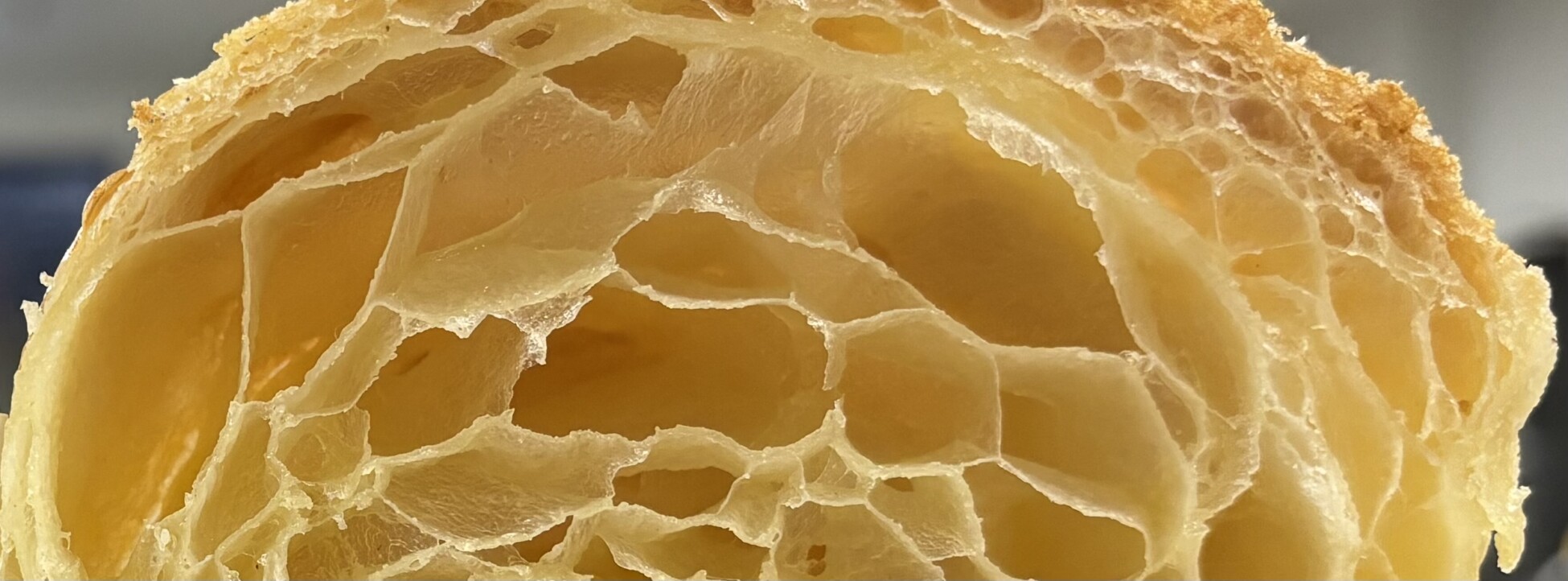
Hey, maybe try asking nicely in future. I get we pay money to access the courses. The chefs provide their time and skill for us to learn.
From my understanding, some of the courses are aimed at people who already have some skill in what they are learning.
As for the English voice over, I don’t mind it. I can always access the recipe book that is in my language.
As for the 1kg rice and 1000kg water, I’d say that is a lost in translation thing. 1000g maybe?
Have a good day. 😁
Store Croissant?
Eat Croissant fresh on the day you make them. 😁 😁 😁 😁 😁 😁 😁 😁 😁 😁
Hi Clint.
I make sure my dough is colder than my butter sheet.
Once I have placed the butter onto the dough, I then do my folds. The soft butter spreads much easier. 😁 👍🏼
The reason the doughs are tight after mixing, is because we are using whole milk at 50%
Given there is (in Australian full cream milk) 90.5% water, 3.5% fat, 3.5% protein per 100ml. The dough is actually hydrated at less than 50%.
Other than 100g of cold unsalted butter in the recipe, there is no other liquid.
I’ve made this recipe 7 times. The first 3 I couldn’t get them to work like Antonio does. It’s 14.93% (.224g) of sugar (don’t forget the lactose in the milk) and only 4.66% (.070g) of fresh yeast. Wow! No wonder mine barely rose. 😁 😁 😁
The tight dough is not a problem for me, as long as it’s given enough rest. 👍🏼
Also, the protein content of your flour is a contributing factor.
Richard, when you are baking your Croissant, do you lose any butter? Are you baking at the recipe recommended temperature of 170c?
I am finding 170c is too low and they do what you are describing.
After a few attempts at 170c, I did a batch at the temperature I usually bake at. 210c for 12 minutes, then I drop to 190c for 6 -8 minutes. 👍🏼
In the video, Antonio recommends up to a week in the freezer.
Covered of course. 😁😁
That’s exactly what I would do. 😁👍🏼
Make sure all your ingredients are cold. Don’t mix the 1.5kg flour weight dough, it’s too much to handle.
I’d do half and half. 😁
Fermentation in bread dough is best at around 28c.
This is warm enough for the yeast to multiply, and cool enough for the dough to rest, the gluten to soften and flavour to develop.
37c is far too warm. It will over-ferment and won’t rise enough when baking.
His original question was actually about the chocolate colour for the bicolour Croissant. 😁
If you are doing a book and a single fold, or three single folds, I recommend the French method of inlaying the butter at the start of lamination.
I was skeptical about Antonio’s method, but it works extremely well. 😁
Watch Antonio in his video when he is laminating.
It’s the English method when he first inlays the butter.
Then he rolls the dough out again and gives the dough his signature triple fold.
He says to imagine the rectangle of dough in fifths.
😁
Over worked? Antonio recommends mixing 7 minutes on slow, scrape the bowl then a further 8 minutes on medium.
I did this to my first two attempts and it was simply way too over mixed. ☹️
There was a problem reporting this post.
Please confirm you want to block this member.
You will no longer be able to:
Please note: This action will also remove this member from your connections and send a report to the site admin. Please allow a few minutes for this process to complete.
If you’re passionate about gastronomy, here’s something you’ll really love.
Login to access to your account